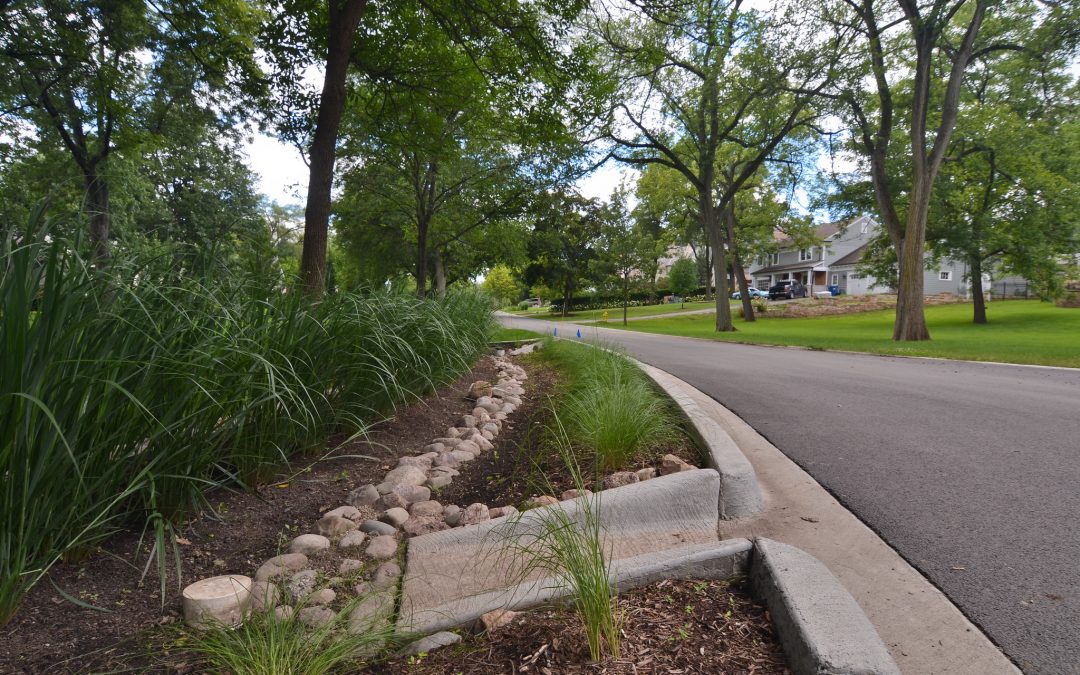Stormwater runoff can be a serious problem.
We think of rain as nature’s water returning to the land to nourish fields and flowers. While true, urbanization now interferes with the cycle.
Streets, roofs and driveways are all examples of impervious surfaces. Water can’t absorb through these materials. Instead, they cause water to flow to the lowest point. As that runoff flows, it collects pollution and debris. By the time stormwater runoff reaches a drain or a stream, it can be full of toxins, pathogens and pollution.
To keep Colorado’s waterways safe and healthy, it will take an effort from us all. Fortunately, there is plenty that each of us can do to help. Here are four of the best stormwater management practices.

Start With Rain Barrels
Any household can start fighting against stormwater runoff with a simple 55-gallon barrel. Rain barrels collect rain from roofs and other surfaces. Since a 2,000-square-foot roof averages over 1,000 gallons per inch of rain, that’s a lot of water available to capture.
Using a rain barrel is an easy way to mitigate roof runoff. As well, capturing the water in a barrel lets you reuse it for several ways, including:
- Garden irrigation
- Water features
- Lawn irrigation
- Car washing
In Colorado, homeowners can collect up to 110 gallons at a time in two 55-gallon containers. Throughout the year, though, those containers should fill and empty as often as possible.
Rain barrels also benefit the environment by trapping water that would otherwise be runoff. Removing roof runoff from the stormwater cycle allows it to absorb into the ground naturally. And the more water captured, the less that is depositing toxins into local waterways.
Get Hands-On With Rain Gardens
Like rain barrels, rain gardens are excellent point-based tools to fight against erosion and pollution. Unlike a rain barrel, rain gardens use the power of nature to do so.
Rain gardens create drainage points using native flora, such as grasses and wildflowers. Also, with a robust root system, rain gardens make great filters for all of the toxins within stormwater.
Plant rain gardens in areas that see high runoff volumes. Low-lying areas that routinely flood are other locations worthy of a rain garden. When digging, excavate the center of the site and create a berm to capture the runoff. Keep the center deeper than the edges.
When it’s time to plant, focus on plants local to your area. Great Colorado options include:
- Sulfur flower
- Purple prairie clover
- Prairie coneflower
- Western wheatgrass
Native plants are already suited for the local conditions. They also make great micro-habitats for native birds and insects. Even more, they become beautiful, self-sustaining jewels of your property in just a couple of years.
Consider a Green Roof
Homeowners with the resources have another tool up their sleeves: green roofs.
As the name suggests, a green roof replaces traditional shingles or tiles with fertile dirt and plants. Like a rain garden, green roofs absorb 90% of the rain that would otherwise become stormwater.
Through layers of soils, planters, and specialized nutrient mats, green roofs become healthy growing systems. Additionally, the benefits of a green roof go far beyond water absorption. For instance:
- They make excellent insulation, reducing heating and cooling costs throughout the year.
- They help protect the structure of the home from weather and other conditions.
- They reduce the heat generated by urban and suburban roofing.
Green roofs aren’t for everyone. The roof must be of sound construction, and able to support the weight of a green roof. They are also expensive, especially due to the materials required to build them.
Still, if you can do so, creating a green roof is a perfect statement of your conviction. With a roof bursting with natural growth and color, you become an environmental leader to all of those around you.
There’s Always Time for Activism
Changes don’t come overnight. Even a rain garden takes time to grow and cultivate. However, using that time to spread the word is essential in raising awareness about stormwater runoff.
Organize groups and create discussions about issues in your community. Are streets routinely flooded after storms? Are the local streams showing signs of erosion? In the beginning, focus on ways to help your neighborhoods.
From there, branch out. Turn your eye toward statewide rural runoff issues. Meet with farmers and highlight how riparian zones and filter strips protect streams from excess farm nutrients.
Or, speak with local mayors about storm drains and filters to keep debris out of local waterways. Lead a group to remove trash from local streams and creeks. The more you do, the more people will learn about the importance of managing stormwater runoff.
Final Notes
We owe it to nature to keep it safe from our pollution. Though one rain barrel or a simple weekly meeting may seem like a small step, every action counts.
Be a force for good, and protect our local waterways. Even these simple practices will have a great impact on Colorado’s water.
Rachel is an Outreach Associate with North Star Inbound. An honor graduate of New York University, she contributes home improvement, landscaping and renovation pieces. When not writing, she enjoys gardening with her mom and spending time in the Florida sunshine.


 Print
Print